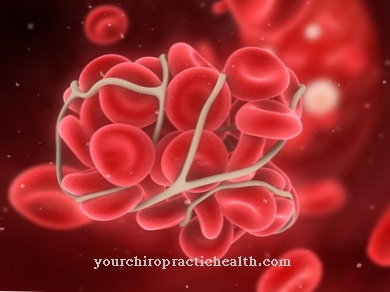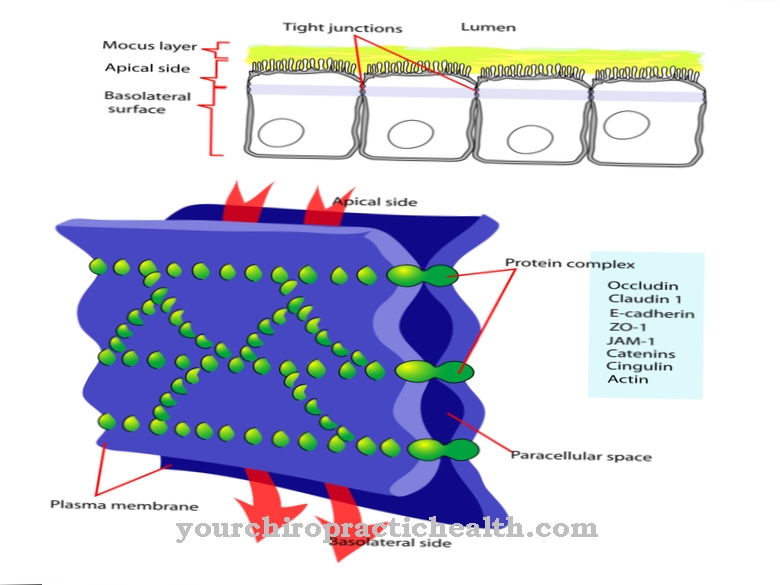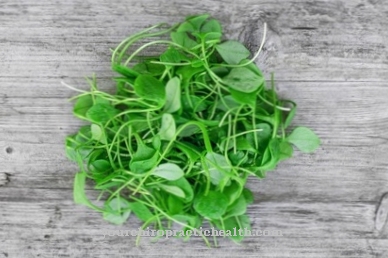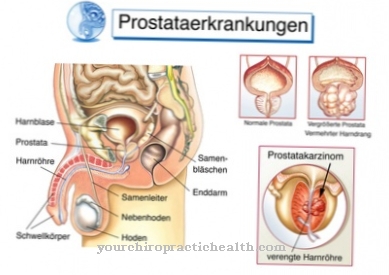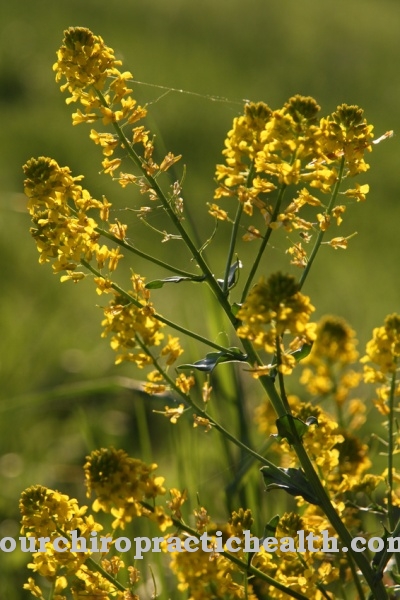In all diseases, the heart has to exert a certain amount of effort. This can already be seen with the flu or angina. But lifestyle can also burden or relieve the heart, and nutrition contributes significantly to this. Overeating is an imposition for the heart; therefore, one should keep a slim and sporty line throughout life.
Little salt for heart disease

If you don't know how to find the right amount of calories for your organism, you can consult your doctor about this, because there are great individual differences. Sometimes you need to do something about excessive appetite with the help of certain medications.
But you can also learn to curb your appetite without medication, because the stomach adjusts itself to a certain amount over time. The heart, however, reacts sensitively to too much salt or liquid in the diet, especially when it is necessary to take it easy.
The top priority must therefore be: little salt and moderate liquid. A healthy person's diet will mostly contain 10 grams of table salt, sometimes more. A heart patient has to learn to limit this amount to 3 to 5 grams, in strict diets to even less.
Here you can again apply the motto: Salt must disappear from the kitchen table and also from the dining table. Our food contains so much salt that we cannot get into a deficiency, because sodium and chlorine, the components of table salt, are among the vital building blocks of our body and nature in general and are therefore so common.
Often the requirement for table salt restriction must also be extended to certain foods, such as smoked, cured and marinated meat and fish products and even sausage and ham, many salads and canned meat and fish. This also includes stock soups and stock cubes.
Butter and most types of margarine, unfortunately also bread and cheese, are mostly made with salt and are often not suitable for people with heart disease who have to strictly adhere to their diet. In such cases it is advisable to agree with the baker to make a few breads a week without added salt and to reserve them for the patient to buy.
The same goes for the butcher. In the latter case, however, it is often easier to find these products in a diet section of the health food store or supermarket.
Little fat in heart disease
Since the heart patient should not consume large amounts of fat (if only to avoid obesity), it is advisable to use an amount of butter of about 10 to 20 grams for the spread of the bread and another 40 to 50 grams of fat either in form To enjoy diet or semi-fat margarine or in the form of olive oil (or safflower oil). In the last few years in particular we have learned that the consumption of vegetable oils instead of animal fats counteracts the occurrence of arteriosclerosis.
What about the protein for the heart patient? He can consume the amount that is also beneficial for a healthy person. This is around 150 to 200 grams of fish or meat for lunch and meat in the form of tartare (scrap meat, beef steak) without salt, only seasoned with herbs. Meat loaf, sauerbraten or fish dishes prepared with low salt can also be eaten.
Of course also game and chicken, veal and pork, but the latter without fat. Eggs can also be used in many ways, but without or only with the use of a few crumbs of salt, as a topping on bread, as a main course or for dinner. Eggs can also be used to make mayonnaise and dressing without table salt.
A very important and very cheap protein carrier is milk, which unfortunately has a very high salt content. Therefore it does not need to be completely removed from the cardiac patient's diet. About 1/4 liter a day is allowed, whereby buttermilk, yoghurt, kefir or sour milk are particularly favorable for the sick. Quark is an important milk product, with as little fat as possible.
So it doesn't have to be the popular butter cheese, because the fat content plays a major role here, which is undesirable for heart patients. Quark can now be added to the kitchen list in various forms, sweet or seasoned (but without table salt!), As a topping on bread or with linseed oil with potatoes.
Potatoes, bread, semolina and pasta are only advisable in small amounts, as larger amounts can easily cause weight gain, which is harmful to the heart. We must not forget the vegetables, which should form the most important part of the diet. However, heavily bloating varieties such as white and savoy cabbage, red cabbage and legumes are not recommended because they can inflate the intestines and thus depress the heart.
Unfortunately, cucumber salad is also not the right choice. All other types, fresh, frozen or canned, but low in salt, are very beneficial. They can be steamed or steamed, but better still as raw vegetables.
Lots of fruit and vegetables for heart disease
This category also includes fruit, which should be eaten daily for people with heart disease, because it is a good source of vitamins and contains large amounts of potassium. This component helps the body to remove the harmful salt and at the same time drains it. If fresh fruit is not available, compotes made from canned fruit can also be used in small quantities or for so-called fruit or juice days.
The question of the amount of fluid can be linked to the most favorable type of fluid. Black tea and herbal teas, small amounts of milk, also in the form of mixed drinks, are cheap. The use of lemon as an additive or in the form of a drink, and occasionally orange juices, are highly recommended because of the richness of vitamins. Today, however, you can practically win any kind of fruit and vegetable juices with modern kitchen appliances and use them as drinks.
The doctor must determine the daily amount himself. In the case of minor illnesses, 1 to 2 liters will still be allowed. A healthy person usually drinks about 1 to 3 liters a day. The doctor must also determine whether coffee and possibly small amounts of alcoholic beverages can be enjoyed by the sick.
The hardest part of the diet for the sick heart is making tasty dishes without salt. You absolutely have to include all herbs in the preparation of the dishes, especially parsley, which contains a lot of vitamin C, and chives, but also savory and marjoram, fresh and dried. Carrots, celery and leeks are also very suitable for seasoning.
Everyone has to learn for themselves whether onions are tolerated. They can cause gas and discomfort. There is nothing wrong with cloves, bay leaf, caraway, ginger, nutmeg, vanilla, cinnamon and spices. Pepper and paprika should only be taken in very small quantities so that they do not become unnecessarily thirsty.
At the same time, this must be linked to the fact that too much sweetening of the food can cause thirst. Preparing tasty dishes is also a question of kitchen technology. Cooking in large amounts of liquid is not recommended, as the dishes are watered down and the flavors are removed from the food.
Vegetables are best steamed, meat and fish can be fried and also roasted, the latter being best done on a grill. This creates very tasty and wholesome dishes that are extremely low in fat, and ideally even with oil.
With a little thought and skill, there is definitely the possibility of creating tasty and varied dishes that do not place any additional burden on the affected heart and help to combat both one of the most common diseases, arteriosclerosis, and one of the most serious, heart attack .
Therefore, it should be pointed out once again that there is a need to restrict the diet - especially the amount of fat. The phrase, which has almost become a catchphrase: "You eat with your eyes" also applies to people with heart disease. However, with the difference that for them it is not important to eat as much as possible, but to enjoy their meals with joy, peace and relaxation.








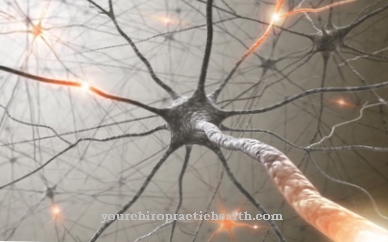
.jpg)

.jpg)

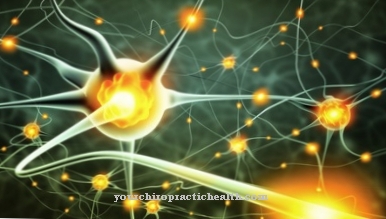
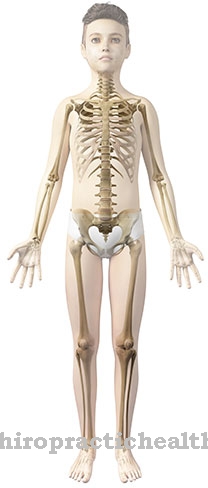


.jpg)


